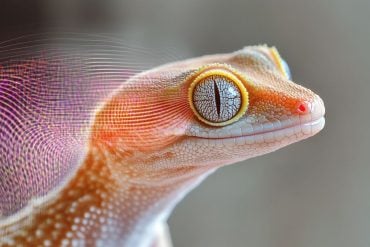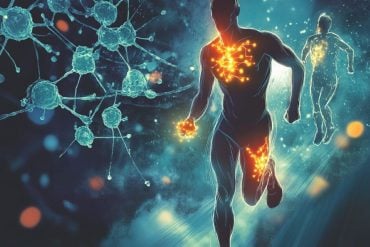Utah team invents way to image brains of mice using a small needle.
A University of Utah team discovered a method for turning a small, $40 needle into a 3-D microscope capable of taking images up to 70 times smaller than the width of a human hair. This new method not only produces high-quality images comparable to expensive microscopes, but may be implanted into the brains of living mice for imaging at the cellular level.
The study appears in the Aug. 18 issue of the journal Applied Physics Letters.
Designed by Rajesh Menon, an associate professor of electrical and computer engineering, and graduate student Ganghun Kim, the microscope technique works when an LED light is illuminated and guided through a fiberoptic needle or cannula. Returned pictures are reconstructed into 3-D images using algorithms developed by Menon and Kim.

“Unlike miniature microscopes, our approach does not use optics,” Menon says. “It’s primarily computational.”
He says this approach will allow researchers not only to take images far smaller than those taken by current miniature microscopes, but do it for a fraction of the cost.
“We can get approximately 1-micron-resolution images that only $250,000 and higher microscopes are capable of generating,” Menon says. “Miniature microscopes are limited to the few tens of microns.”
Menon hopes to extend the technology in the future so it can see details down to submicron resolutions, compared with the current 1.4 microns. (A micron is a millionth of a meter. A human hair is about 100 microns wide.)
The microscope was originally designed for the lab of Nobel Prize-winning U human genetics professor, Mario R. Capecchi, whose team will use it to observe the brains of living mice to gain insight into how certain proteins in the brain react to various stimuli. Because the microscope can be assembled so inexpensively and easily go into hard-to-reach places, Menon and Kim expect many other uses for the device.
“This microscope will open up new avenues of research,” Menon says. “Its low-cost, small-size, large field-of-view and implantable features will allow researchers to use this in fields ranging from biochemistry to mining.”
Source Annalisa Purser – University of Utah
Contact: University of Utah press release
Image Source: The image is credited to Ganghun Kim, University of Utah and is adapted from the press release
Original Research Full open access research for “An ultra-small three dimensional computational microscope” by Ganghun Kim and Rajesh Menon in Applied Physics Letters. Published online August 2014 doi:10.1063/1.4892881
An ultra-small three dimensional computational microscope
We present a computational approach that allows one to create microscopic images in 3D through a miniature, rigid cannula. Light rays propagate from one end of the cannula to the other resulting in a complex intensity distribution. This distribution is unique to the position of the source of the rays. By applying appropriate calibration and utilizing a nonlinear optimization algorithm, we computationally reconstructed images of objects with a minimum feature size of ∼5 μm. Preliminary experiments indicate that the sensitivity of the imaging technique can be as small as 100 nm in the transverse plane and ∼1 μm in the longitudinal direction. Since the cannula is only 14.7 mm long and 200 μm in diameter, this allows for highly miniaturized microscopes that utilize no optics and no scanning. Furthermore, since the images are obtained with just a single frame (no scanning), fast image acquisition is also feasible.
“An ultra-small three dimensional computational microscope” by Ganghun Kim and Rajesh Menon in Applied Physics Letters. doi:10.1063/1.4892881.






